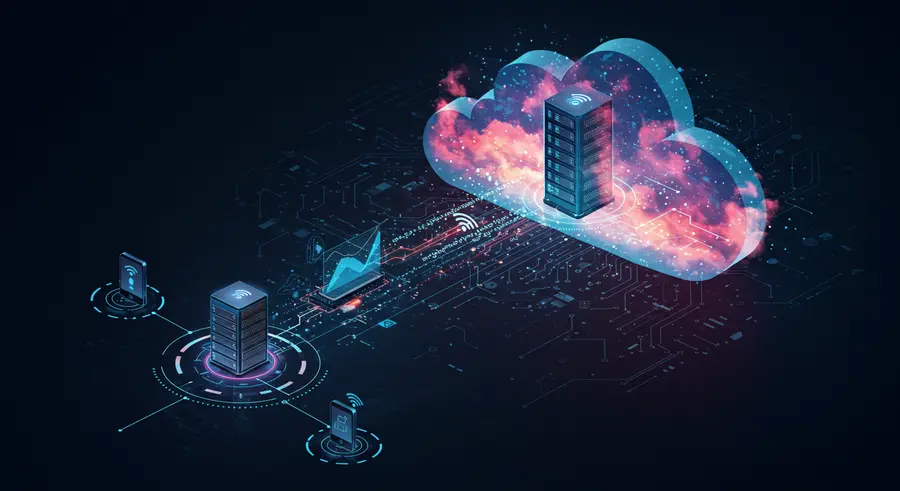Appearance

Welcome, tech trailblazers! 👋 Today, we're diving deep into the fascinating world of Edge Computing. You might have heard this term circulating in tech discussions, but what exactly is it, and why is it becoming so crucial in our increasingly connected world? Let's explore this transformative technology, its applications, and what the future holds, packed with insights and practical examples!
What is Edge Computing? 🤔
At its core, Edge Computing brings computation and data storage closer to the sources of data. Think of it as moving the "brain" of processing away from centralized cloud servers and closer to where the data is actually generated – at the "edge" of the network. This could be anything from a smart sensor in a factory, a mobile device, an autonomous vehicle, or even a smart home appliance.
Traditionally, data generated by these devices would be sent to a central cloud data center for processing. While the cloud offers immense scalability and power, this approach introduces latency (delays) and consumes significant bandwidth, especially with the sheer volume of data being generated today. Edge computing aims to solve these challenges by processing data locally or at a nearby server.
Why is Edge Computing Important? 🚀
The rise of the Internet of Things (IoT), 5G networks, and AI-powered applications has made edge computing indispensable. Here's why:
- Reduced Latency: Processing data closer to the source means faster response times. This is critical for real-time applications like autonomous vehicles, industrial automation, and augmented reality, where even milliseconds of delay can have significant consequences.
- Lower Bandwidth Consumption: Instead of sending raw, massive datasets to the cloud, edge devices can pre-process, filter, and analyze data locally, sending only relevant or summarized information to the cloud. This significantly reduces bandwidth usage and associated costs.
- Enhanced Security & Privacy: Keeping sensitive data localized at the edge can improve security by reducing the attack surface and minimizing data exposure during transit to a central cloud. It also helps in complying with data privacy regulations.
- Increased Reliability: Edge systems can operate even with intermittent or no connectivity to the central cloud. This is vital for remote operations or mission-critical applications where continuous uptime is paramount.
- Scalability: Edge computing allows for distributed processing, offloading tasks from central servers and enabling more scalable and efficient deployments.
Edge Computing in Action: Real-World Examples 🌍
Edge computing isn't just a theoretical concept; it's already transforming various industries:
- Autonomous Vehicles: 🚗 Self-driving cars generate terabytes of data per hour from sensors. Processing this data at the edge allows for instantaneous decision-making, crucial for safety and navigation, without relying on constant cloud connectivity.
- Smart Factories & Industrial IoT (IIoT): 🏭 In manufacturing, edge devices monitor machinery for predictive maintenance, analyze production line efficiency, and ensure quality control in real-time. This prevents costly downtime and optimizes operations.
- Healthcare: 🏥 Wearable health monitors and smart medical devices can process patient data at the edge, providing immediate alerts for critical conditions and ensuring data privacy.
- Retail: 🛒 Edge analytics in stores can track inventory, analyze customer behavior, and personalize shopping experiences in real-time, improving operational efficiency and customer satisfaction.
- Smart Cities: 🏙️ Traffic management systems, smart streetlights, and public safety applications leverage edge computing to process data from sensors and cameras, enabling intelligent responses to urban challenges.
The Symbiotic Relationship: Edge and Cloud 🤝
It's important to understand that edge computing isn't replacing cloud computing; rather, they are complementary. The edge handles immediate, real-time processing, while the cloud remains essential for long-term data storage, heavy-duty analytics, machine learning model training, and global data aggregation. It's a powerful synergy that optimizes performance, cost, and data management.
Future Trends in Edge Computing 🔮
The edge computing landscape is evolving rapidly. Here are some key trends to watch:
- AI at the Edge (Edge AI): Integrating AI and machine learning capabilities directly into edge devices will enable more intelligent and autonomous decision-making without constant cloud interaction. This will power advanced computer vision, natural language processing, and predictive analytics at the source.
- 5G Integration: The ultra-low latency and high bandwidth of 5G networks will further accelerate edge computing adoption, enabling seamless communication between edge devices and faster data offloading when necessary.
- Security & Trust at the Edge: As more sensitive data is processed at the edge, robust security frameworks, including Zero Trust architectures and advanced encryption, will become paramount.
- Industry-Specific Edge Solutions: We'll see more tailored edge solutions designed to meet the unique requirements of specific industries, such as healthcare, logistics, and energy.
- Containerization and Orchestration: Technologies like Kubernetes will extend to the edge, enabling efficient deployment and management of applications across distributed edge environments.
Conclusion ✨
Edge computing is not just a trend; it's a fundamental shift in how we process and manage data, driven by the demands of an increasingly connected and data-intensive world. By bringing computation closer to the source, it unlocks new possibilities for real-time applications, enhances efficiency, and improves security across countless industries.
To learn more about related emerging technologies, check out our Emerging Technologies Catalogue.
Stay curious, and keep exploring the edge! If you have any thoughts or questions, feel free to share them. 👇